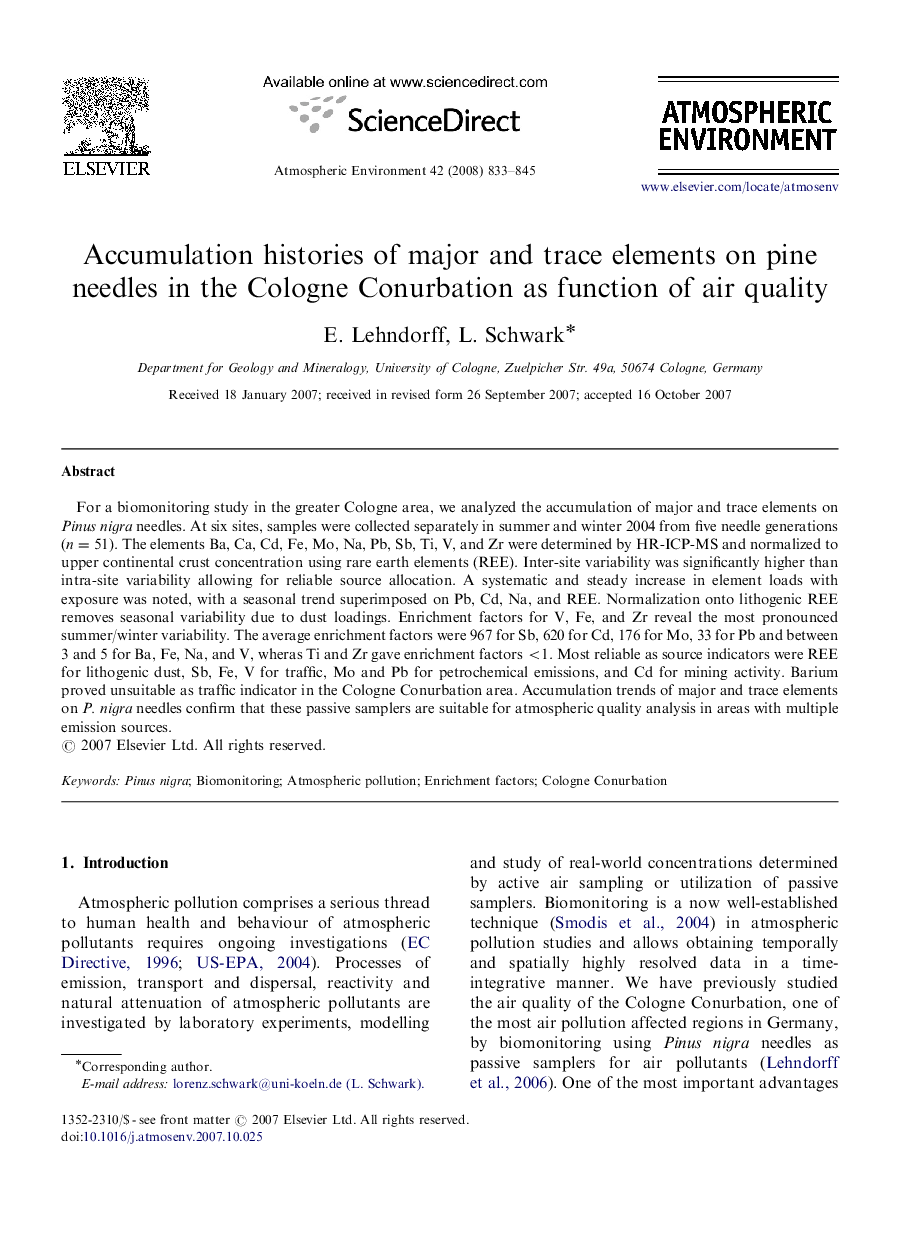| Article ID | Journal | Published Year | Pages | File Type |
|---|---|---|---|---|
| 4443169 | Atmospheric Environment | 2008 | 13 Pages |
For a biomonitoring study in the greater Cologne area, we analyzed the accumulation of major and trace elements on Pinus nigra needles. At six sites, samples were collected separately in summer and winter 2004 from five needle generations (n=51). The elements Ba, Ca, Cd, Fe, Mo, Na, Pb, Sb, Ti, V, and Zr were determined by HR-ICP-MS and normalized to upper continental crust concentration using rare earth elements (REE). Inter-site variability was significantly higher than intra-site variability allowing for reliable source allocation. A systematic and steady increase in element loads with exposure was noted, with a seasonal trend superimposed on Pb, Cd, Na, and REE. Normalization onto lithogenic REE removes seasonal variability due to dust loadings. Enrichment factors for V, Fe, and Zr reveal the most pronounced summer/winter variability. The average enrichment factors were 967 for Sb, 620 for Cd, 176 for Mo, 33 for Pb and between 3 and 5 for Ba, Fe, Na, and V, wheras Ti and Zr gave enrichment factors <1. Most reliable as source indicators were REE for lithogenic dust, Sb, Fe, V for traffic, Mo and Pb for petrochemical emissions, and Cd for mining activity. Barium proved unsuitable as traffic indicator in the Cologne Conurbation area. Accumulation trends of major and trace elements on P. nigra needles confirm that these passive samplers are suitable for atmospheric quality analysis in areas with multiple emission sources.
